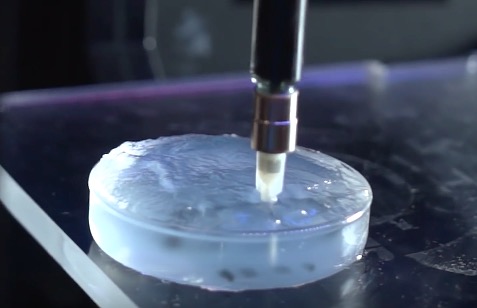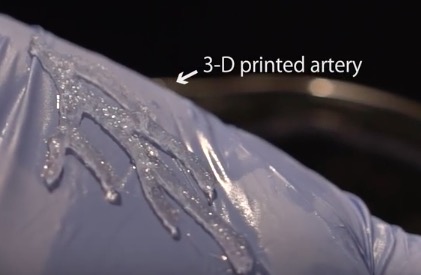In a study recently published in the Science Advances Journal, researchers from Carnegie Mellon University describe a new process for 3D bioprinting of soft materials. This has been achieved with the help of consumer-grade desktop 3D printers and open source software, making it an inexpensive and accessible technology.
A team led by associate professor Adam Feinberg used a gel-like support bath material and 3D printed the actual soft material inside, layer by layer. The new technique is called Freeform Reversible Embedding of Suspended Hydrogels, short FRESH.
“3D printing of various materials has been a common trend in tissue engineering in the last decade, but until now, no one had developed a method for assembling common tissue engineering gels like collagen or fibrin,” explained TJ Hinton, graduate student in biomedical engineering at Carnegie Mellon and lead author of the study.
“The challenge with soft materials — think about something like Jello that we eat — is that they collapse under their own weight when 3-D printed in air,” explained Feinberg. “So we developed a method of printing these soft materials inside a support bath material. Essentially, we print one gel inside of another gel, which allows us to accurately position the soft material as it’s being printed, layer-by-layer.”
Once finished, the support gel can be melted away and removed by heating it to body temperature.
“Not only is the cost low, but by using open-source software, we have access to fine-tune the print parameters, optimize what we’re doing and maximize the quality of what we’re printing,” Feinberg explains. “It has really enabled us to accelerate development of new materials and innovate in this space. And we are also contributing back by releasing our 3-D printer designs under an open-source license.”
The research group is now working toward incorporating real heart cells into the 3D printed tissue structures, which could provide a scaffold for the contractile muscle to form.
Subscribe to our Newsletter
3DPresso is a weekly newsletter that links to the most exciting global stories from the 3D printing and additive manufacturing industry.























